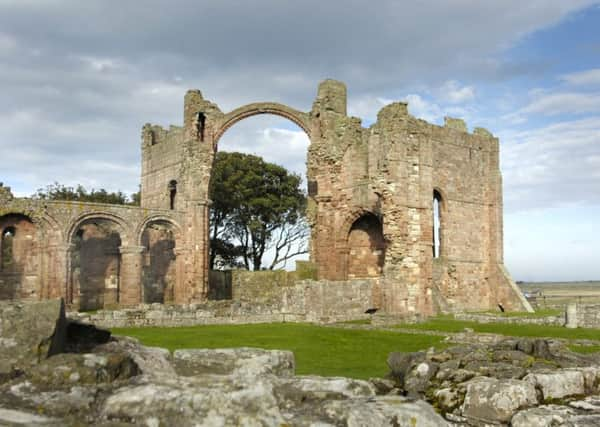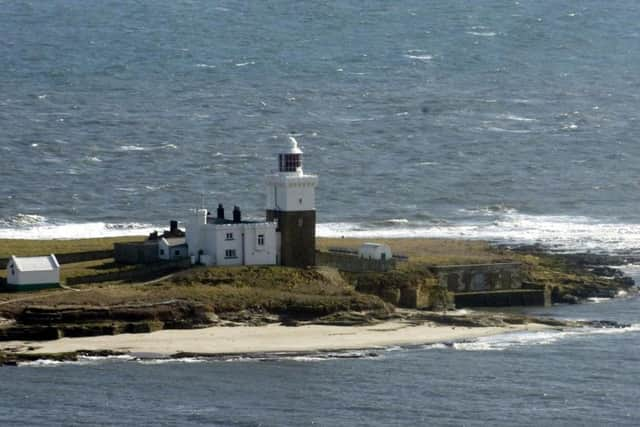Eye-catchers and hideaways still make a contribution


Harehope Hill, with nearby Old Bewick and Ros Castle, Jenny’s Lantern near Bolton, and Yeavering Bell above Kirknewton, are but a tiny selection of early settlements and Iron Age forts.
In more recent times Jenny’s Lantern, just like next door Lemmington Branch and Shepherd’s Law, has sported eye-catchers – follies which easily trap the unwary traveller into imagining castles and mansions sprouting from prominent peaks and scarps.


Advertisement
Hide AdAdvertisement
Hide AdAll of these formed ideal locations for defensive sites and, indeed, places from which their inhabitants might hide from others, for one reason or another.
From the 18th century onwards, eye-catchers also offered shelter from the storm winds, for shepherds and cowmen, sheep and cattle, high on the Northumbrian hills.
This was the case with Shepherd’s Law, which looks down on the former pele tower and eye-catcher Crawley Tower, above Powburn.
Romantics have imagined Shepherd’s Law to be a remote sheep court, reminding all of the Border Reivers and sheep stealers, who were often times sentenced to penal servitude in the Antipodes.


Advertisement
Hide AdAdvertisement
Hide AdLess romantically, but more probably, Shepherd’s Law was a hilltop sheep farm.
Its farm house cowered behind a protecting screen wall, which included a substantial tower and with mock Romanesque or classical blind arcading; a small plantation of trees added more shelter from the winter blizzards and gales.
But Shepherd’s Law reveals for us another quite different tradition for which the northern part of our county is renowned.
For in 1969, Brother Harold, then a friar with the Society of St Francis (whose local base remains at Alnmouth), made his way up to these substantial ruins with a young theological student.
Advertisement
Hide AdAdvertisement
Hide AdAmong other things, the two of them carried a surveyor’s tape measure as Harold checked out the location. But of what were they in search?
The answer was a suitable place to establish a religious house, which would focus on the solitary life.
He had been encouraged in his search by a friend, one Jean Claude, a French Capuchin monk, himself a hermit who continues to live the solitary life in the foothills of the Pyrenees.
In choosing North Northumberland for his hermitage, Harold was placing himself within a well-established tradition.
Advertisement
Hide AdAdvertisement
Hide AdThe seventh century Irish monks, and notably the pioneering missionary Aidan, fastened on a number of locations where they might spend time entirely alone, alongside their life in monasteries.
Most renowned of all was the foundation established by Aidan on the Holy Island of Lindisfarne. There, both he and his equally remarkable successor Cuthbert, established ‘powerhouses of prayer’.
So tradition has it that the tiny St Cuthbert’s Island, just offshore from the former coastguard station on Holy Island, was one of Cuthbert’s earliest ‘eremitic’ retreats. Ruins of a chapel are still just visible.
Only five or six miles to the south, on Inner Farne, there survives a tiny chapel, probably once again on the site of Cuthbert’s original hermitage.
Advertisement
Hide AdAdvertisement
Hide AdThe present church is 14th century. In the 1840s, part of the screen from Durham Cathedral was brought to embellish the church.
Further south again, just off the coast at Amble, lies Coquet Island, legendary scene of the encounter of Cuthbert with Elfled, sister of King Egfrith. Later this became a ‘cell’ of Tynemouth Priory.
Then, St Cuthbert’s Cave, inland near Holburn, is traditionally yet one more hermitage of Cuthbert.
Finally, half a mile up river from Warkworth, on the north bank of the Coquet, is another hermitage, burrowed out of the sandstone, as is Cuthbert’s cave, but in later medieval times.
Advertisement
Hide AdAdvertisement
Hide AdBrother Harold continues to live a solitary life, but also welcomes other retreatants and religious.
In 1979, four two storey cells rather in the Carthusian style were blessed by Robert Runcie, then Archbishop of Canterbury.
More recently, in 2004, the Archbishop of York, in an ecumenical service (the hermitage is dedicated to the unity of God’s Church) dedicated a new chapel, in Romanesque style, including some stone and brick within the fabric, polished and smoothed by the tide on Holy Island.
The hermitage is dedicated to the Blessed Virgin Mary and St Cuthbert.
Advertisement
Hide AdAdvertisement
Hide AdLast year, in a five yearly competition to seek out the best piece of ecclesiastical architecture in Britain, the chapel at Shepherd’s Law was joint winner, alongside the new Quaker Centre at Kingston on Thames in South West London. Both places, coincidentally, are dedicated to reflection and silent prayer.
The new chapel at Shepherd’s Law means that this North Northumbrian hill, with arguably one of the best views in England, is now a ‘double eye-catcher’ and an even more deeply committed and serious hideaway.
Its life is ‘hidden’, but remains a crucial contribution to all our lives in this part of England.